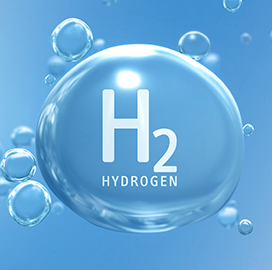The National Renewable Energy Laboratory has created a new Hydrogen Analysis Lite Production model to support the techno-economic analysis of various hydrogen production technologies.
H2A-Lite is part of a broader suite of tools used in studies that aim to reduce costs and environmental impacts of the element’s production pathways, NREL said Wednesday.
“The H2A model is rigorous, with process information about each of the production technologies that helps you actually calculate nuanced production scenarios,” said Michael Penev, senior analyst for infrastructure and energy storage analysis at NREL.
“In the Lite model, we are focusing on making that framework more accessible to a wider set of audiences,” he added.
H2A-Lite uses technical and financial variables to provide projections of capital costs, operating costs and revenue. It builds on the H2A model used by the Department of Energy in hydrogen production case studies.
Current methods of producing hydrogen include thermochemical, electrolytic, direct solar water splitting and biological processes. Research is being conducted to make these pathways more sustainable as industries switch to renewable energy and the demand for hydrogen continues to rise.





